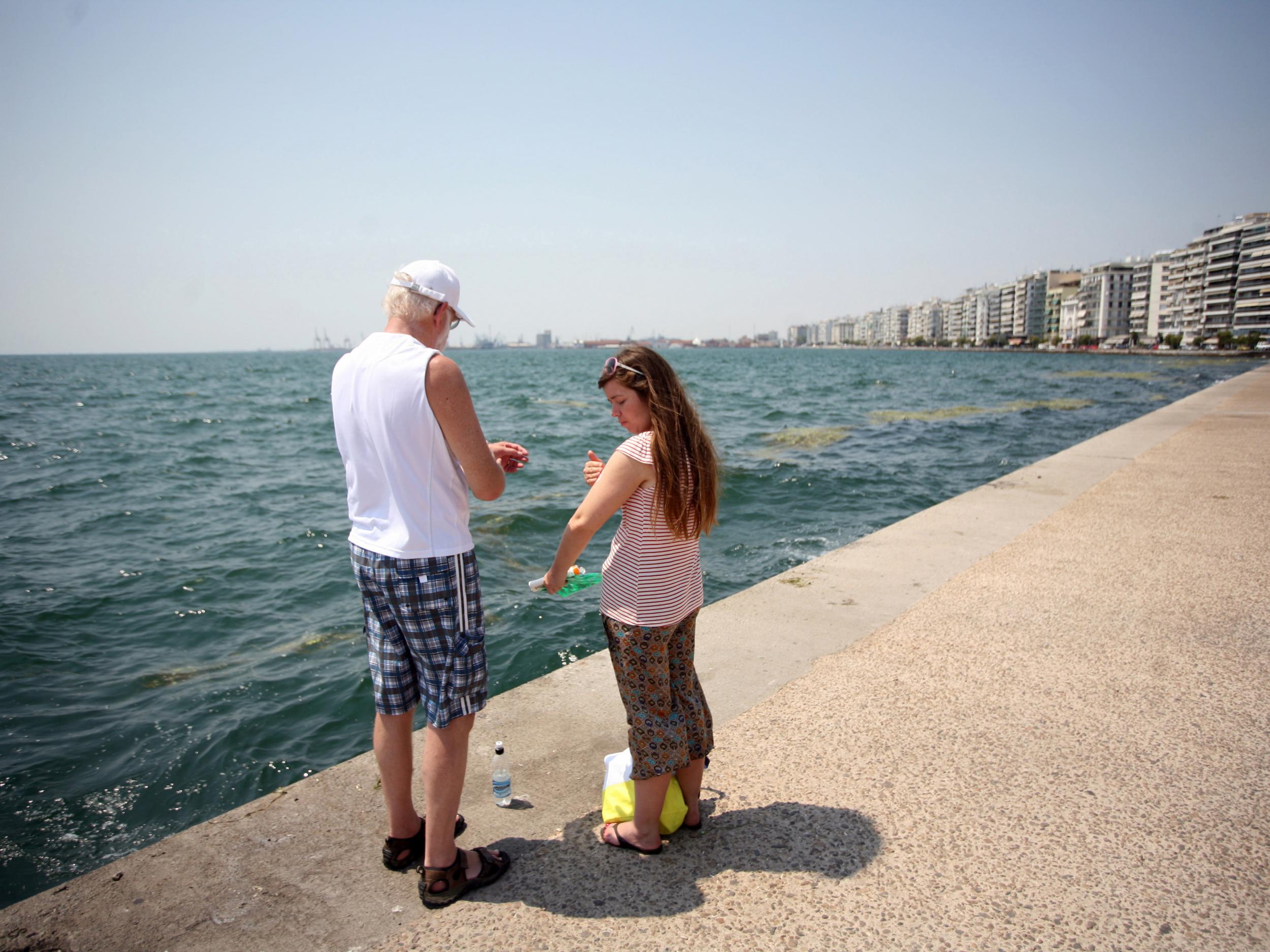Sunscreen could be poisoning marine life and polluting beaches, study finds
Scientists warn of accumulation of chemical in toxic concentrations but urge bathers to continue using appropriate protection regardless

Sunscreen washing off the skin of holidaymakers and swimmers as they take a dip during scorching hot summer weather could be poisoning marine life in coastal regions.
Research conducted on the popular tourist beaches of the south of France has revealed the potential harm being caused by a chemical, which is a key component for sun protection, generally considered safe.
While the scientists behind the study urge people to continue using sunscreen, they said manufacturers must work towards solutions that protect both human and environmental health.
Tiny nanoparticles of titanium dioxide (TiO2) were the culprits identified by the research team.
Because these particles are so small they do not reflect visible light but do absorb UV light and therefore protect human skin from the sun’s rays.
Normally TiO2 particles in sunscreen are coated with layers of protective chemicals, but Dr Jerome Labille from Aix-Marseille University and his colleagues found that this changed when they entered the environment.
Exposure to factors including UV light and seawater appears to break down this coating and expose pure TiO2 to the aquatic environment.
Historic sites across UK exposed by heatwave
Show all 15Although this chemical is broadly considered safe for human use, concentrated amounts or long-term exposure are thought to pose a risk to fish and other sealife.
To arrive at their conclusions, the scientists measured TiO2 concentrations on three beaches near Marseille.
They also surveyed bathers about the amount of sunscreen they used, and how much time they spent in the water.
Their calculations showed that for a small beach with around 3,000 people visiting daily, more than 50kg of nanoparticles would likely be produced over the course of summer – a significant quantity the researchers say could be affecting wildlife.
While they noted some of these particles would be dispersed, much is likely to accumulate. In areas of standing water like lakes the effect could be even worse.
“It is important to keep this in perspective; TiO2 is a pollutant, and we need to take measures to try to reduce the quantities of TiO2 which are concentrated in the aquatic environment,” said Dr Labille.
“Nevertheless, it is extremely important that sunbathers continue to use sunscreen for skin protection. The TiO2 pollution needs to be dealt with by the manufacturers and possibly legislation, and we’ve had good feedback from the manufacturers we are working with”.
The team’s results were presented at the Goldschmidt geochemistry conference in Boston.
Dr Thilo Hofmann from the University of Vienna, who was not involved in the new research, said: “This work is of special interest, since it shows for the first time how nanoparticles from cosmetics may influence the aquatic environment.
“Earlier work from our group has shown this for lakes and rivers, but this is the first study for the marine environment.”
In July Hawaii became the first place to ban sunscreens containing specific chemicals that had been linked to coral reef damage.
While TiO2 was not among them, experts say the growing evidence concerning the damage caused by some of these substances should put pressure on manufacturers to find alternatives that avoid harm to both humans and the environment.
“The good news is that we are working on nanoparticle UV filters and sunscreen formulations which will reduce the potential damage from titanium dioxide,” said Dr Labille.
“We’re looking at developing sunscreens which are ‘safe by design’, in which the release and toxicity of nanoparticles will be minimised, so we anticipate that a solution to this problem isn’t too far away.”
Subscribe to Independent Premium to bookmark this article
Want to bookmark your favourite articles and stories to read or reference later? Start your Independent Premium subscription today.

Join our commenting forum
Join thought-provoking conversations, follow other Independent readers and see their replies